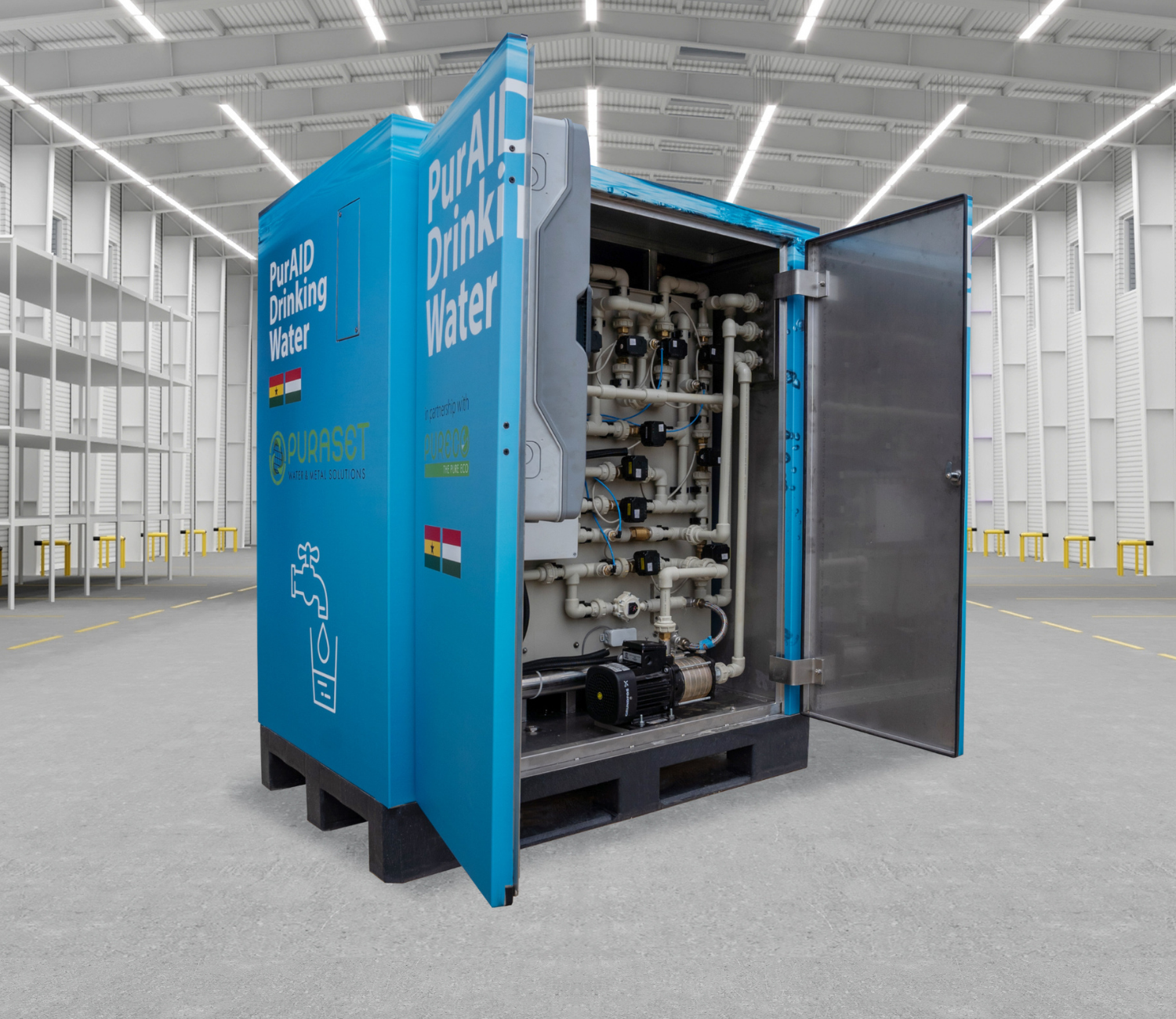Puraid® - Water treatment solution for rural communities
Image gallery

Properties
- Subtitle Compact mobile water purification system based on modular units
- Video
- Product sheet
Content
A significant proportion of the population in developing countries lives in rural areas, in small communities of up to a few thousand people. Their water supply is provided by millions of wells, the water of which in most cases is heavily polluted. Our direct experiences and information in Vietnam, Bangladesh, India, and Ghana show that the supply of drinking water to the rural population must be solved with simple, reliable, inexpensive water treatment equipment. Considering the above, we developed a compact, pallet-size mobile device based on modular units. PurAID® is equipped with a monitoring center as well to ensure continuous, intelligent operation.
The system provides continuous data on the operation of the equipment and possible errors, so the problem can be remedied immediately, thus ensuring the continuous operation of the system. From the database formed by the center, important information can be extracted for the operators, about the consumption habits of the users.
System maintenance and regeneration of filter materials can be performed without interrupting the water supply. The equipment is also suitable for the treatment of drinking and irrigation water, in compliance with the WHO regulations, according to which not only drinking water but also food production must be made with purified water.
Module 1: Mechanical filter: to remove physical contaminants
Module 2: adsorption modules, arsenic and/or boron and/or iodine and/or fluorine removal units
Module 3: adsorption module, iron and manganese removal unit
Module 4: ion exchange resin, ammonium ion removal unit
Module 5: Disinfection unit
Module 6: Measurement data processing and data transmission module
Vietnam Arsenic removal
Intro
Our expansion into the Far East began with Vietnam, where arsenic contamination of drinking water is a huge problem
Properties
- Subtitle
Development of control rod used in reactor technology
Intro
In 2019, we developed a reactor technology control rod for the Eötvös Lóránd Research Network - Energy Science Research Center, in which the desired parameters were achieved by blasting, while the gas tightness was achieved by electron beam welding.
Properties
- Subtitle


